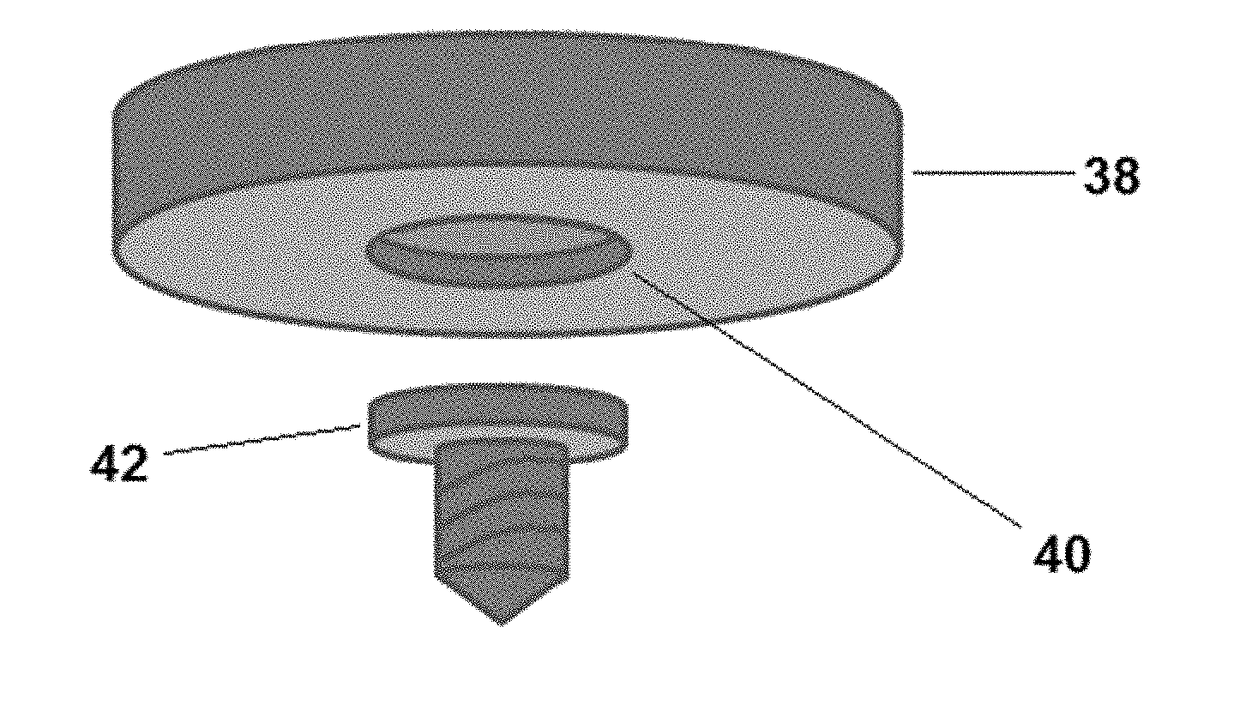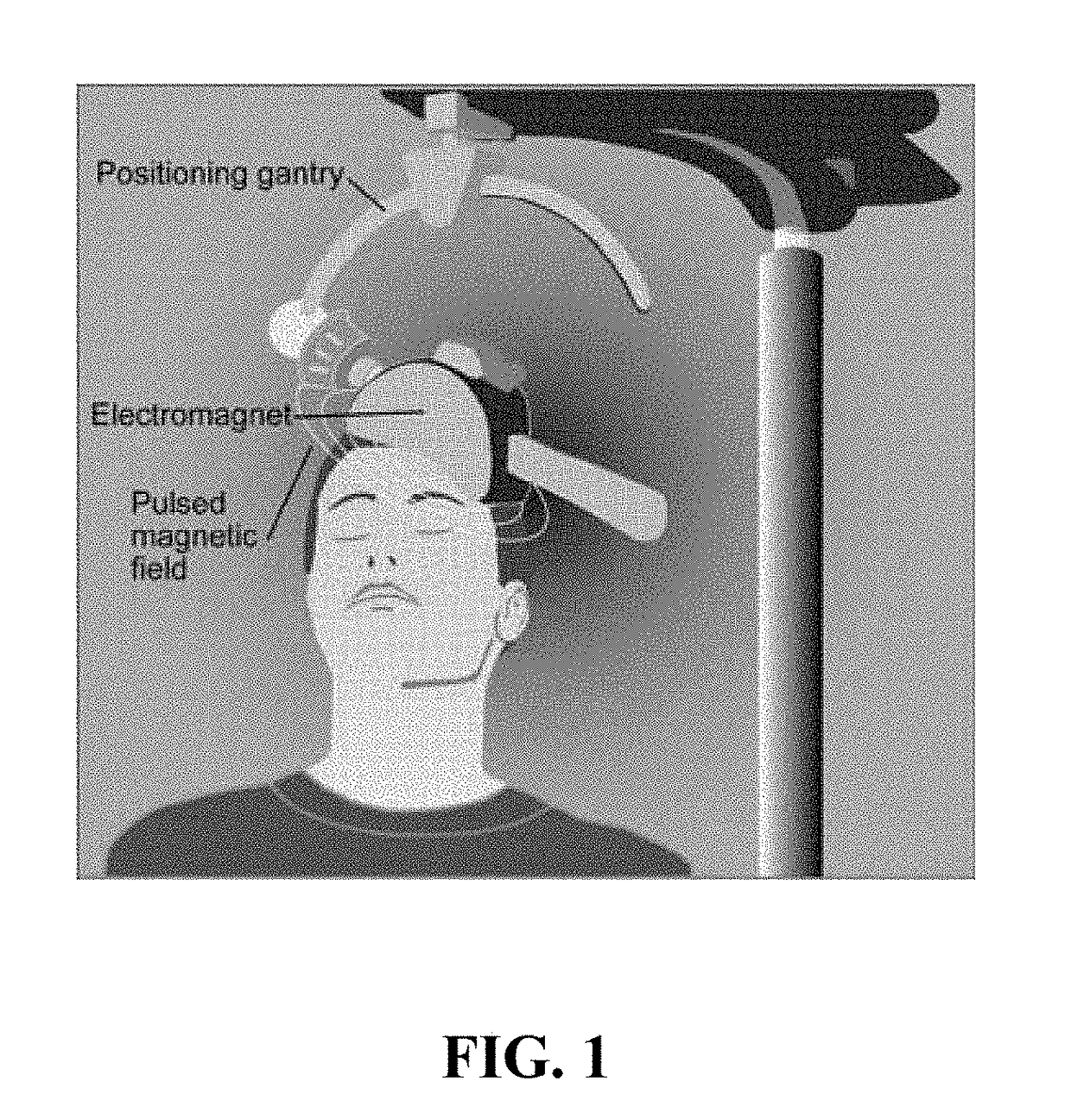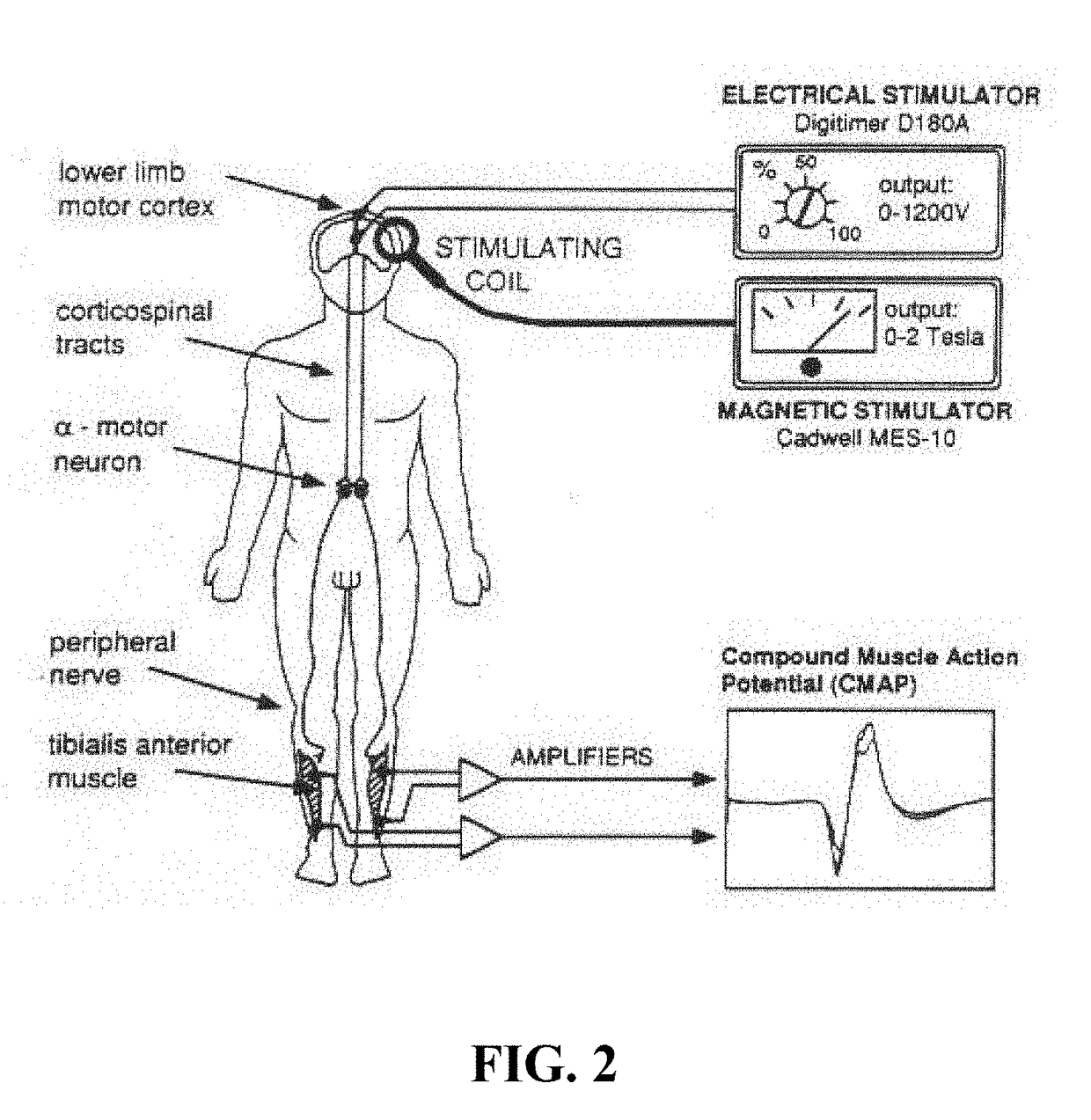Skull implanted magnet assembly for brain stimulation
a magnet assembly and skull technology, applied in the field of skull implanted magnet assembly for brain stimulation, can solve the problems of inability to predict the effect of the patient's brain activity, and inability to fully absorb the magnetic field, so as to achieve the effect of increasing the cognitive performance of the patien
- Summary
- Abstract
- Description
- Claims
- Application Information
AI Technical Summary
Benefits of technology
Problems solved by technology
Method used
Image
Examples
example 1
Constructing a Magnet-Loaded Skull Screw
[0106]A magnetic skull screw may be machined from titanium by the following procedure, which is summarized in FIG. 3:[0107]1. Start with a titanium rod material cut to an appropriate length as a screw blank.[0108]2. Remove a cap section from the blank.[0109]3. Drill an axial hole at the tip end of the screw blank where the magnet will be inserted.[0110]4. Insert and secure the magnet in the axial hole.[0111]5. Weld the cap into the body of the screw under inert gas and special cooling. Perform a leak test using a helium mass spectrometer.[0112]6. Machine the screw to its final shape. Perform a leak test using a helium mass spectrometer.[0113]7. Finish the surface by anodizing, texturing, or ion implant.
example 2
Shape of the Magnetic Field
[0114]One half of a simulated absolute magnetic field strength from two magnets is shown in FIG. 9. The arrangement and shape of the magnets, which are outlined by the dotted lines, approximates those in the implantable magnet assembly: the top magnet is a disc-shaped magnet, and the bottom magnet is a cylindrical rod-shaped magnet, with the left side of the plot being the rotational axis of symmetry for both magnets. Magnetic field lines are also shown. To reduce artifacts, the simulation assumes the magnets to be in free space, rather than housed within an assembly. The lowest magnetic field strength represented is about 100 times stronger than the Earth's magnetic field.
example 3
Strength of the Magnetic Field from the Magnet-Loaded Skull Screw
[0115]The magnetic field near the tip of the skull screw is solenoidal in geometry and depends on a number of parameters. The axial field strength was calculated for the following parameters and assumptions:[0116]a) Screw length: 40 mm[0117]b) Screw diameter: 7 mm[0118]c) Magnet material: NdFeB, Brmax (residual flux density)=1.2 T[0119]d) Magnet dimensions: 8 mm long, 1.5 mm diameter[0120]e) Magnet to tip spacing: 5 mm
[0121]These parameters produce a magnetic strength along the axis from the tip of the screw as shown in FIG. 10. It is useful to compare these values with the magnetic field of the Earth. The magnetic field strength at the surface of the Earth varies considerably but averages about 0.04 mT. As FIG. 10 shows, the magnetic field 1 cm from the tip of the magnet-loaded skull screw is about 150 times larger than that of the Earth.
[0122]The magnetic field strength near either end of the magnet, but off axis, is...
PUM
 Login to View More
Login to View More Abstract
Description
Claims
Application Information
 Login to View More
Login to View More - R&D
- Intellectual Property
- Life Sciences
- Materials
- Tech Scout
- Unparalleled Data Quality
- Higher Quality Content
- 60% Fewer Hallucinations
Browse by: Latest US Patents, China's latest patents, Technical Efficacy Thesaurus, Application Domain, Technology Topic, Popular Technical Reports.
© 2025 PatSnap. All rights reserved.Legal|Privacy policy|Modern Slavery Act Transparency Statement|Sitemap|About US| Contact US: help@patsnap.com



